
As summarised earlier by Houses & Holes, the Australian Bureau of Statistics (ABS) has released labour force data for the month of February, which reported no change in the headline unemployment rate (still 5.4%), but a seasonally-adjusted 71,500 increase in jobs across the economy, with a 17,800 increase in full-time jobs supplemented by a 53,700 increase in part time jobs. It was the biggest monthly gain in employment since July 2000. However, the strong employment gains were offset by a rise in the labour force participation rate by 0.3% to 65.3% (see below charts).
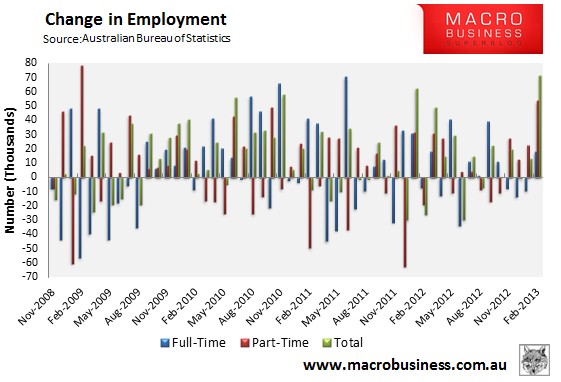
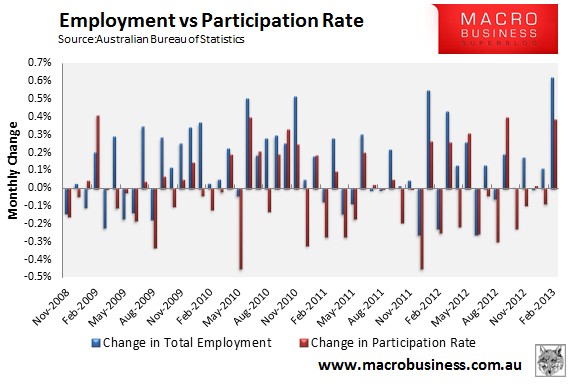
Total employment has clearly broken-out after flatlining since May 2012:
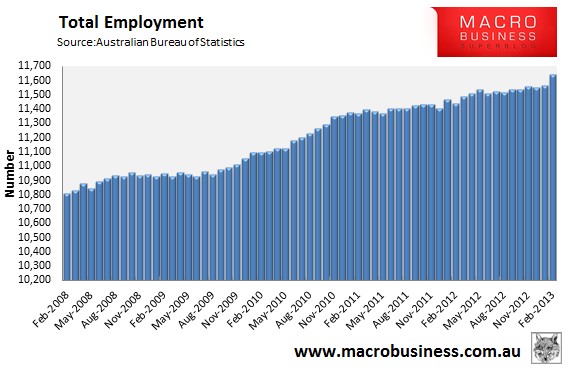
Job creation was driven by the non-mining states, particularly Victoria and New South Wales:
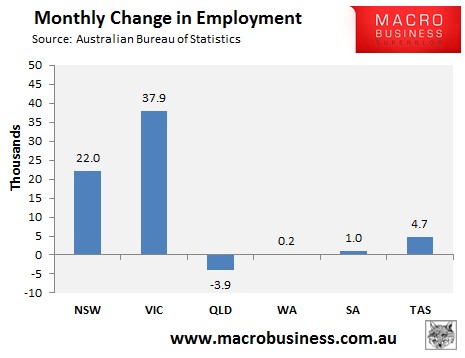
Australia’s employment market no longer appears to be two-speed, with all major capitals enjoying jobs growth over the past year:
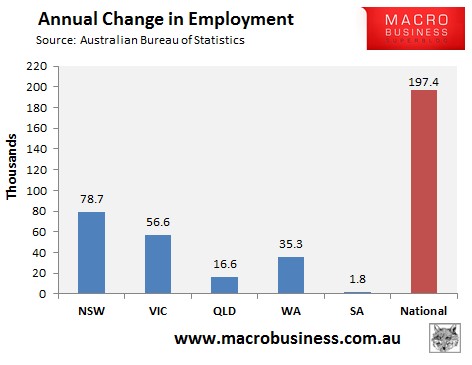
The variance of unemployment rates across the capitals has also narrowed, suggesting the labour market is re-balancing away from mining:
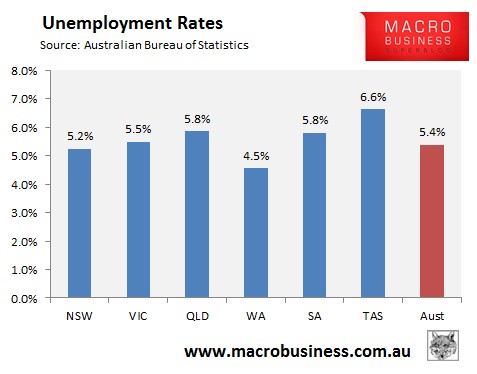
That said, the state seasonally-adjusted figures are notoriously volatile and subject to a big margin of error. As such, the below chart shows the ABS’ trend unemployment rates, which shows Western Australia and New South Wales with the lowest unemployment, Tasmania with the highest, and the others practically neck-and-neck above the national average:
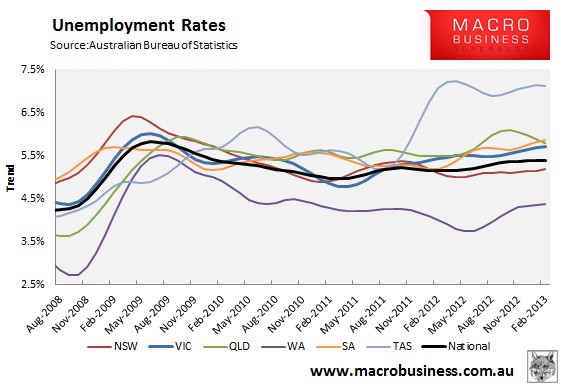
Another positive from this release is that growth in the aggregate number of hours worked rose by 0.7% nationally in February:
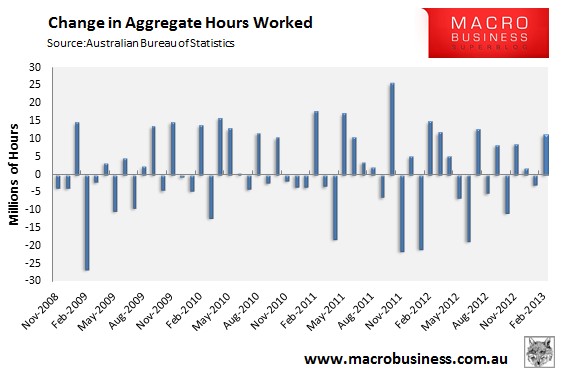
However, annual growth in the aggregate number of hours worked fell slightly in February – to 1.0% from 1.2% – driven by big falls in Western Australia:
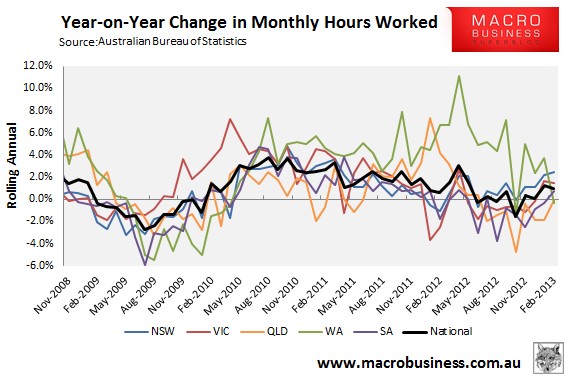
The employment-to-population ratio also rose to 61.8% from 61.5%, breaking away from its recent downtrend:
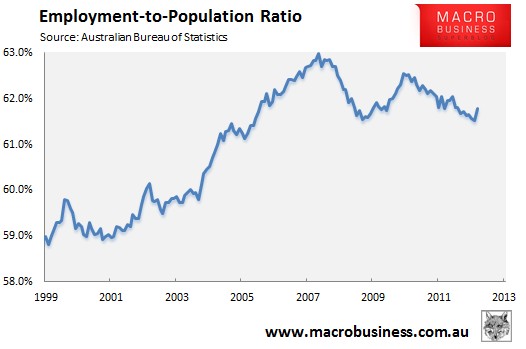
The rolling annual average number of hours worked per employed person remained steady at 140.8 hours per month:
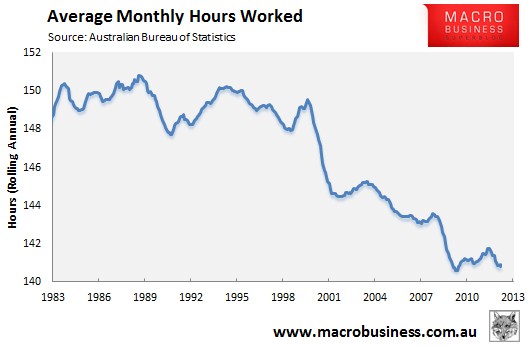
And the national labour underutilisation rate also remained steady at 12.5%:
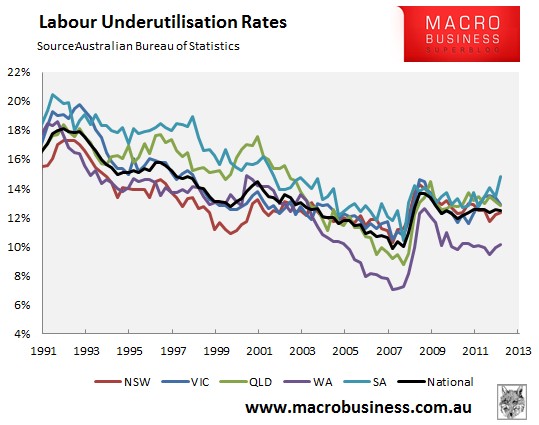
Finally, for what it is worth, the gap between the official ABS unemployment rate and the unofficial Roy Morgan Research measure narrowed slightly owing to a 0.3% jump in the non-seasonally adjusted ABS unemployment rate to 6.1% from 5.8% in January (see below charts).
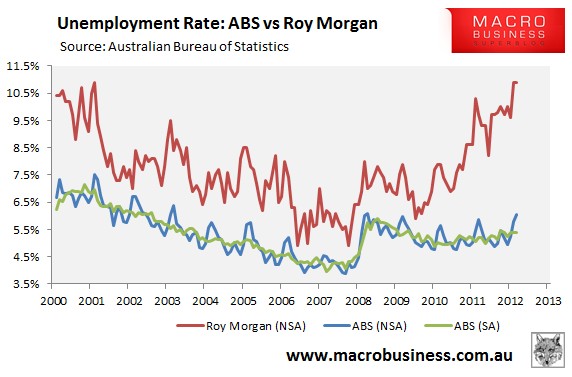
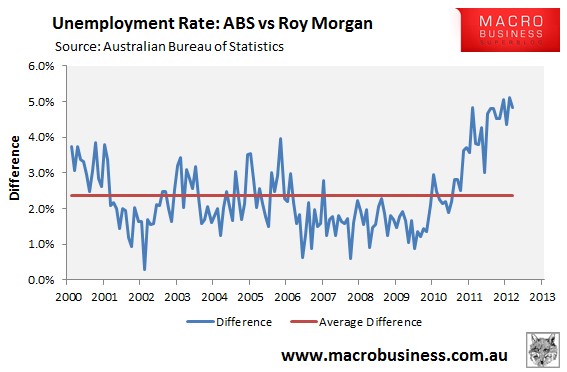
Overall, this labour force release is a very strong result, with all the key indicators – the number of jobs created, aggregate hours worked, and the employment-to-population ratio – showing solid improvements, as well as a rebalancing of employment away from the mining sector.

